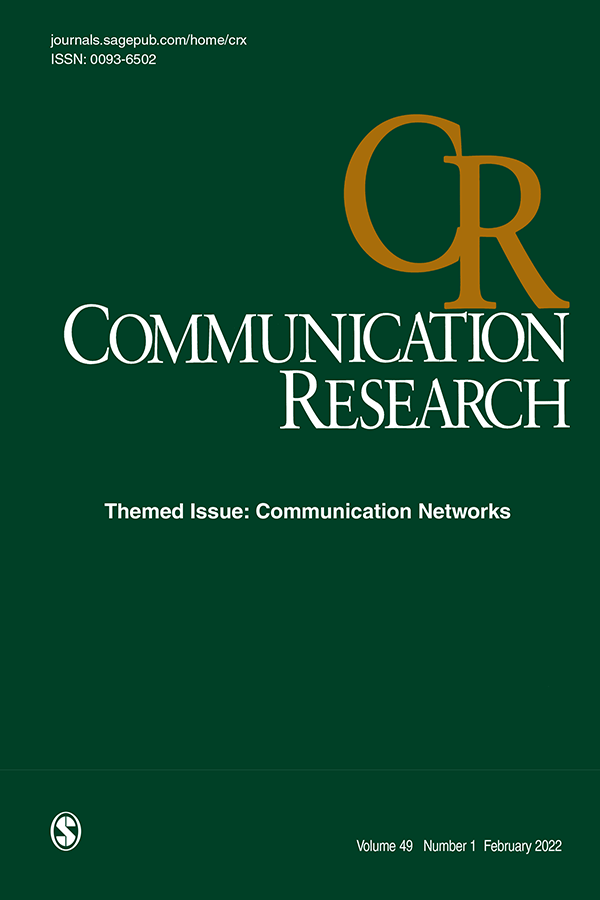The Effects of “Media Tech Neck”: The Impact of Spinal Flexion on Cognitive and Emotional Processing of Videos
IF 4.9
1区 文学
Q1 COMMUNICATION
引用次数: 0
Abstract
Adoption of mobile devices (e.g., smart phones and tablets) has popularized a neck-down posture during media consumption that is different from the traditional upright body posture for video viewing. A neck-down posture exerts substantial pressure upon the spine, and this posture has been previously linked to psychological effects. This study advances the literature by studying the impact of posture effects on processing audiovisual information. In a mixed design experiment (N = 87), the effect of neck posture when viewing 24 video PSAs was tested using physiological and self-report measures. Multilevel modeling analyses of heart rate and corrugator data showed that spinal flexion lowered attentional engagement and caused incongruent emotional responses to the messages compared to a neutral spine posture. However, spinal-flexion participants exhibited greater skin conductance, counter to the predicted emotional disengagement. The impact of neck posture on message processing was largest at the beginning of the experiment and faded over time.“媒体技术颈”的影响:脊柱屈曲对视频认知和情绪加工的影响
移动设备(如智能手机和平板电脑)的采用在媒体消费过程中普及了脖子朝下的姿势,这与视频观看时的传统直立姿势不同。脖子朝下的姿势会对脊椎施加很大的压力,这种姿势以前曾与心理影响有关。本研究通过研究姿势效应对视听信息处理的影响来推进文献。在混合设计实验中(N = 87),使用生理和自我报告测量来测试观看24个视频PSA时颈部姿势的影响。心率和波纹器数据的多层次建模分析表明,与中性脊柱姿势相比,脊柱屈曲降低了注意力投入,并导致对信息的情绪反应不一致。然而,脊柱屈曲的参与者表现出更大的皮肤传导性,与预测的情绪脱离相反。颈部姿势对信息处理的影响在实验开始时最大,随着时间的推移逐渐减弱。
本文章由计算机程序翻译,如有差异,请以英文原文为准。
求助全文
约1分钟内获得全文
求助全文
来源期刊

Communication Research
COMMUNICATION-
CiteScore
17.10
自引率
0.00%
发文量
20
期刊介绍:
Empirical research in communication began in the 20th century, and there are more researchers pursuing answers to communication questions today than at any other time. The editorial goal of Communication Research is to offer a special opportunity for reflection and change in the new millennium. To qualify for publication, research should, first, be explicitly tied to some form of communication; second, be theoretically driven with results that inform theory; third, use the most rigorous empirical methods; and fourth, be directly linked to the most important problems and issues facing humankind. Critieria do not privilege any particular context; indeed, we believe that the key problems facing humankind occur in close relationships, groups, organiations, and cultures.
 求助内容:
求助内容: 应助结果提醒方式:
应助结果提醒方式:


